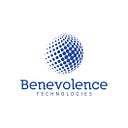4 ways to keep enterprise content management systems relevant_2
Previous part — 4 ways to keep enterprise content management systems relevant_1
What is Enterprise Content Management (ECM)?
Do you have any idea What is enterprise content management meaning? Simply put, ECM is the framework for automated digital document management: the collection, storage, management, organization, and distribution of documents and files so that they are accessible to the appropriate people and processes in your systems.
Architect for a different era, these systems have been left behind by the current working and computing environment. It has increased pressure on government IT teams to update their ECM strategies or address control, security, and compliance issues that arise when bringing consumer technology into a public sector IT environment. Are Developing a new approach to ECM will help agencies overcome shadow IT and adhere to required standards.
3. Plan to blast digital content
We are in the midst of a data flood. IDC predicts a 50-fold increase in digital content from 2010 to 2020, of which 90% will be non-structured information such as emails, documents, and videos. All this new material must be properly stored, managed, and governed. With so much content, it can be harder than ever for users to find this information quickly. If the content is not properly organized, controlled, or protected because it is “in the wild” — spread across network drives, mobile devices, laptops, email, USB sticks, and consumer file sharing sites. , Operational and other risks.
Modern ECMs need to use context comments, preferences, geolocation information to move the business process forward, moving content within the right application at the right time. This will enable the information to be put in context so that people and processes work more efficiently and effectively.
4. Adopt developing IT infrastructure
Legacy ECM platforms are not generally built for the cloud-scale and offer only limited mobile support. Many government agencies have moved to a hybrid storage approach, storing content on campus and in the cloud. This requires smooth synchronization between the two locations. An agency’s ECM approach requires recognizing the need for control and compliance and supporting traditional on-premises deployments, virtualized environments, private cloud deployments, as well as full public cloud SaaS deployments, and everything in between.
Agencies must adopt a strategic platform to meet the often conflicting needs of consumers — who want to work remotely and with people outside the agency — and IT must ensure that content is secure and orderly. And by the policies of the administration. Agencies will need to figure out which content is suitable for sharing in the cloud, and which should be in the compound behind the firewall.
The way we work — the way we access, use, and share content — is undergoing massive change. People are more mobile, projects are more collaborative, and businesses are more diverse. ECM plays a key role in storing, managing, and controlling the content that keeps the government moving.
Agencies must address the need to allow people to operate where and how, enable the transfer of information and processes to the expanded enterprise, develop a system for handling digital content management and IT teams. To make deployment in IT infrastructure easier. Government employees will be empowered to do great work and engage when developing the latest ECM strategy, taking into account the current workplace.
